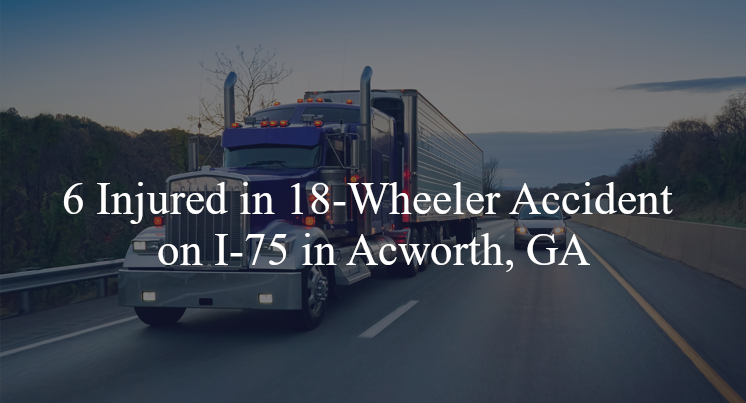6 Injured in 18-Wheeler Accident on I-75 in Acworth, GA
Acworth, GA — April 2, 2025, Six people were injured following an 18-wheeler accident that occurred at around 6:58 A.M. on I-75.

An investigation is underway following an 18-wheeler accident that left six people injured during the morning hours of April 2nd. According to official reports, an accident involving three passenger vehicles occurred in the northbound lanes of I-75 near Hwy. 92 which then resulted in a collision between three tractor-trailers, which resulted in debris on the road causing another crash.
When first responders arrived on the scene, they found that six people had sustained injuries and they were transported to the hospital for treatment. At this time there has been no further information released from the accident, including the identities and status of those injured, however this remains an ongoing investigation and more details may be released by authorities in the future.
Commentary by Attorney Michael Grossman
rashes involving multiple vehicles and several 18-wheelers often unfold so quickly that it's easy to lose track of who did what and when. But when six people end up in the hospital and debris from earlier collisions contributes to additional crashes, there's no question that the chain of events deserves a careful and methodical investigation.
The reports so far suggest that everything began with a collision between three passenger vehicles, which then triggered a crash involving three tractor-trailers. That alone raises serious concerns about spacing, reaction time, and speed—particularly for the commercial trucks. While truck drivers aren't always the ones who start these chain reactions, the size and weight of their vehicles mean their actions often determine just how bad things get.
One of the first questions that should be asked is whether the truck drivers involved were following at a safe distance. In congested traffic, especially on an interstate like I-75, trucks need significantly more time and space to stop. If any of them were tailgating or not paying close attention, they could have turned a manageable situation into something far more dangerous. Investigators will need to pull ECM data, look at dash cam footage if it exists, and collect witness statements to reconstruct the sequence of impacts.
But the analysis shouldn't stop there. It's also important to consider how cargo was secured and whether any of the debris that led to the later crashes came from a poorly loaded or maintained truck. I’ve handled cases where improperly secured cargo contributed to secondary crashes long after the initial impact. If any of the trailers involved shed parts or cargo, that could point to liability beyond the initial collision.
When crashes stack up like this, the legal complexity increases dramatically. Responsibility can be shared across multiple drivers, and sometimes even their employers, depending on how their policies around training, rest, or scheduling may have contributed to what happened.
One thing is clear: this wasn’t just a single crash—it was a sequence. And the only way to understand how it happened, and who may be accountable, is to trace that sequence all the way back to the first misstep. Anything less won’t provide the full picture, and it certainly won’t prevent the next one.

“These are essential reads for anyone dealing with the aftermath of a truck wreck”– Attorney Cory Carlson